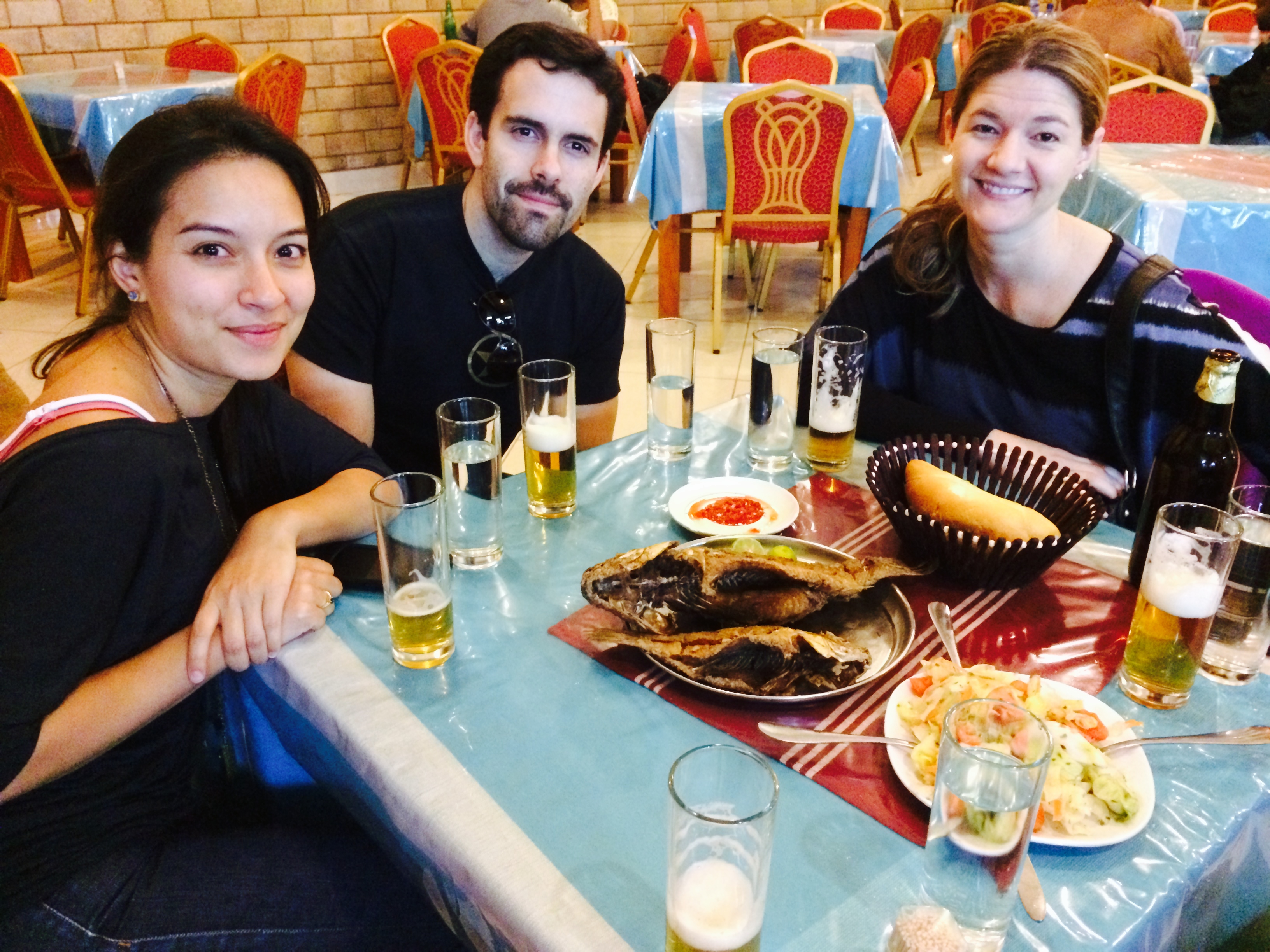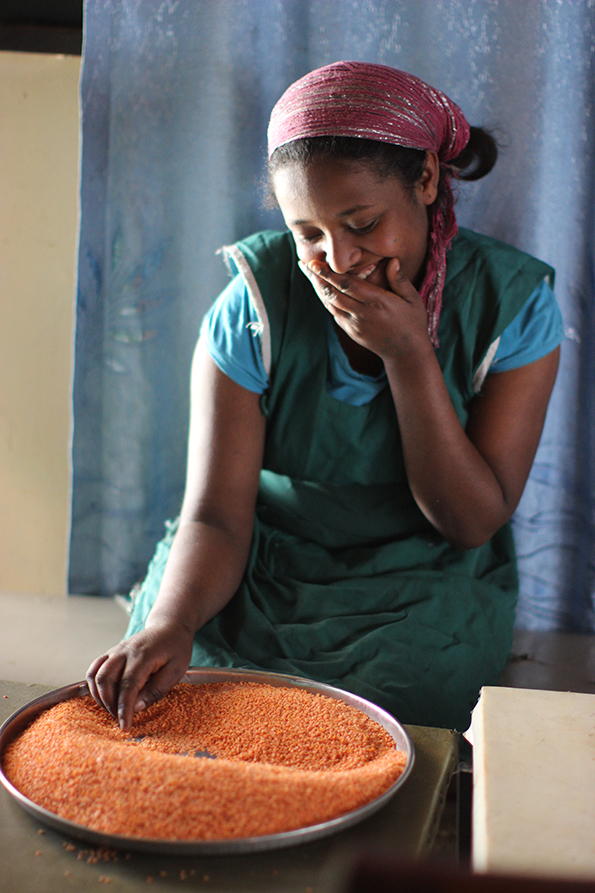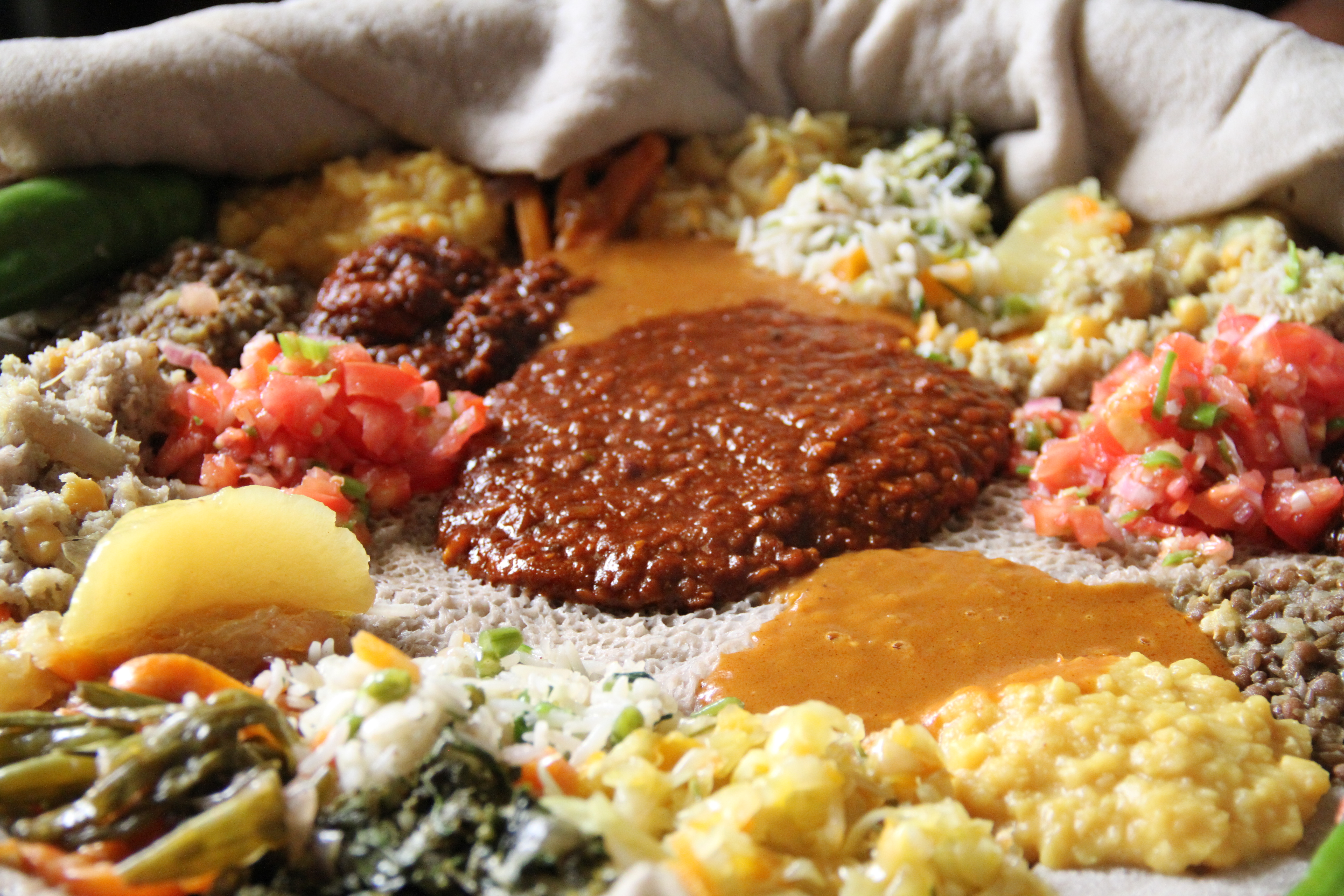I recently had the the pleasure of speaking with two culinary entrepreneurs, Eliza Richman and Xavier Curtis of AddisEats, a company giving food tours of Addis Ababa, Ethiopia. I asked them a few questions about their background and what inspired them to pursue this idea, which I think is brilliant. And hunger-inducing — after speaking with them I had a craving for Kitfo, Mesir Wat, and of course Injera…!
Culinary Diplomacy: Could you give us a brief introduction to the idea of AddisEats?
AddisEats: The concept behind AddisEats is to enable visitors to eat like locals and to experience Addis like few tourists ever do.
Our walking tours cover a range of eating establishments – from upper-class restaurants to hole-in-the wall joints. At each restaurant we sample their best dish or two, so that overall, the guests are sampling a wide range of local, traditional foods, just as Ethiopians eat them. By focusing on non-tourist oriented establishments, the recipes and flavors are just as the locals eat them.
Our clientele is mostly non-Ethiopians who want to experience Addis as if they had been living there for years. We take people off the beaten path to local spots they wouldn’t find on their own: to restaurants hidden down alleys where old ladies cook up authentic traditional food; to places that seat as few as ten people; and to well known local restaurants where you have to fight for a table. These spots are the hidden jewels of the city, jam-packed with locals, and the places you have to visit when in Addis Ababa.
CD: How did Addis Eats begin? What was the inspiration?
AE: Both of us are food obsessed. Xavier has been working in restaurants since he was 15 and on small-farms since he was at University of Wisconsin. He was also very involved in university’s Slow Food movement during his time there, and embodied that mantra by buying whole cows and pigs!
Eliza spent a lot of time traveling with her family, always following the dictum “travel on your stomach”. She ate in her first Michelin star restaurants before she was 14; with an introduction to the world of food like that it’s hard not to become infatuated. She has been eating Ethiopian food since infancy. Lemmy, her beloved Ethiopian nanny and her second mom, lived with Eliza’s family in Washington, DC from when Eliza was 2 months old until she went to college. Lemmy would regularly cook up awesome Ethiopian dishes.
Between the two of us we have over 15 years combined restaurant experience; we love to travel, each of us have visited over 30 countries and lived on three continents; and we both have experience working in the tourism industry in Ethiopia prior to AddisEats.
We’ve spent most of our free time in Addis searching out local restaurants. We’d come back raving about the new spots we find, and eventually our friends started coming with us on impromptu mini food tours.
This led us to realize that there was no easy way for visitors to eat authentic Ethiopian cuisine with a guarantee of finding the best (and safe) places. The tourist-oriented restaurants where the food is cooked for outsider’s tastes, is neither authentic nor as delicious. We wanted to create a way for visitors to eat authentic food and interact with Ethiopians.

Our inspiration, plain and simple, is the food. From delicious cloud-like injera smothered with tantalizing, butter-rich stews to tender roasted lamb cooked in traditional clay pots, the food is superb. It’s true that Ethiopians take a ton of pride in their food, and we promise you, it shows. The amount of time, knowledge and the diverse range of ingredients that go into Ethiopian cuisine is enough to pique any food lover’s interest.
CD: Here’s a definition for culinary diplomacy: “using food and cuisine as instruments to create cross-cultural understanding in the hopes of improving interactions and cooperation.” How do you see the mission of AddisEats fitting into the concept?
AE: Our tours not only inform outsiders about Ethiopian culture, they also show locals that even though their food is different from what our guests are used to eating, people are still interested in getting a first-hand view of their food, as well as their lives. So much so that they are willing to pay to experience it!
We come to these restaurants time and time again with different people peering over our shoulders, as we file down muddy side streets, through small shops and tight hallways eager to eat what smells so great from the kitchen.
In a country with such an isolating tourism industry (people whizzing by in white Land Rovers with the windows rolled up, going from fancy hotels to fancy restaurants), locals are thrilled to see tourists off the beaten path experiencing the real Ethiopia just like they do. For Ethiopians, it validates the pride in their food and their culture that they are so passionate about.
Food (and coffee) is perhaps the most important cultural aspect in Ethiopia. Ethiopians are extremely proud of their cuisine and beyond delighted to share it!
More personally, eating locally is what has facilitated our acceptance into Ethiopian culture. Sitting down to a shiro with construction workers, taxi drivers or office workers has given us an incredible view into the culture of Ethiopia. We have made friends over meals, honed our language skills and been more accepted as one of their own. It’s amazing that when sharing a communal plate of injera, cultural barriers fall by the wayside, more broadly, allowing us and the locals to get to know each other in far more meaningful ways.
CD: Do you see yourselves as diplomats for Ethiopian food?
AE: Absolutely. We are so passionate and food-obsessed that we can’t help but speak enthusiastically whenever we talk about Ethiopian food. Our excitement and love for the cuisine is infectious; it’s one of the main reasons why people enjoy coming on the tours.
Our Ethiopian-born friends and colleagues openly admit that we are the experts when it comes to Ethiopian food. Our friends laugh at the fact that we, especially Xavier, craves injera at least once a day. We’ve eaten in just about every type of Ethiopian kitchen and restaurant there is in Ethiopia and we’ve gone into many of those kitchens to meet the chefs or the owners so that we can learn a bit of their magic. We continue to devote a lot of time to learning as much as we can, and tasting everything we can find, to broaden our knowledge about Ethiopian cuisine.
CD: How have the restaurateurs and market vendors responded to the tours?
AE: The response has been super positive at every place we’ve chosen. It’s a great two-way relationship that benefits both parties.
One of the best parts of our job is getting to know the owners, waiters and staff of the different restaurants we frequent. The relationship with them is what keeps AddisEats in business, as they are the ones who deliver the show! Seeing the waiters, the girls in the kitchen and the owners beaming with pride as we walk out of another great meal is a wonderful feeling.

CD: Who are your clientele in general? How have they reacted to the food you’ve helped them discover?
AE: Most people who come on tours are people transiting through Addis or here for a conference. They’re holed up in hotels all-day and eager to get out to explore.
So far our responses have been uniformly positive! For example, we have 30 reviews on TripAdvisor and they are all 5-stars. The tourism industry in Ethiopia is very young and under-developed and we offer a service that no one else does.
People are thrilled to get off the beaten path and get some local insight. Our customers always remark that they would never have had the guts or the know-how to try the places and the foods that we expose them to. They express a huge sense of satisfaction and gratitude for helping them experience real Ethiopian food.
We get a lot of Americans and Canadians but we’ve also had people from every continent: India, Australia, Chile, Argentina, Dubai, UK, Gabon, China, Germany, Qatar, Brazil, Burkina Faso and the Netherlands!
CD: And finally, what are your favorite Ethiopian dishes?
AE: Eliza’s absolute favorite dish is kitfo: raw meat chopped so thinly it almost becomes a paste (similar to beef tartar). It is warmed in Ethiopian butter (which is first clarified and then heavily spiced with coriander, cumin, beso bela (Ethiopian basil), garlic, fenugreek, turmeric and more). The meat is served with several variations of the local cheese: plain, mixed with mitmita (a local chili spice), and mixed with chopped collard greens. The cheese perfectly cuts the spice of the butter. I have to admit that I didn’t eat this for the first 2 years I was here, but am currently making up for lost time!
Xavier’s favorites are: gomen be siga (collard greens slow cooked with beef ribs and Ethiopian butter); mesir wat (lentil-stew spiced with berbere); and shiro be kibe (ground chickpea stew cooked with Ethiopian butter). Kitfo is also a favorite of his (and he’s been eating it for way longer!)

CD: Thank you both for taking the time to chat. I can’t wait to make it to Addis for my first AddisEats tour!
One Response
The Daily: Hip-hop Diplomacy Meets France | The Public Diplomat
[…] Gastrodiplomacy enthusiasts Eliza Richman and Xavier Curtis of AddisEats, a food tour company in Addis Ababa, Ethiopia, give an interview on the inspiration for their work. […]